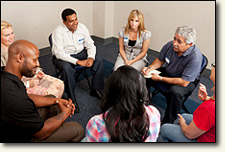
Until very recently, the recovery industry has not required or provided supervision for those providing treatment. Over the past few years, licensing boards of many states have begun requiring not only licensure for their substance abuse counselors but also some form of accreditation for those that provide supervision, consultation, and guidance to them.
Our (7 CE Credit Hours) online course Supervision in the Recovery Field: Guiding Clinicians and Psychotherapists Providing Substance Abuse Treatment, provides a comprehensive overview of what is required for adequate and effective supervision of substance abuse counselors.
A few points to consider:
- Preliminary data for 2009 from the CDC shows the highest percentage in a decade measured for adults who have consumed more than 5 drinks a day (23%).
- The use of illicit drugs among Americans increased between 2008 and 2009, according to a national survey conducted by the Substance Abuse and Mental Health Services Administration (SAMHSA).
- The National Survey on Drug Use and Health (NSDUH) shows the overall rate of current illicit drug use in the United States rose from 8.0 percent of the population aged 12 and older in 2008 to 8.7 percent in 2009. (This rise in overall drug use was driven in large part by increases in marijuana use.)
- In 2004, approximately 22.5 million Americans aged 12 or older needed treatment for substance abuse and 3.8 million people received it.
- In adults 50 years and older, alcohol was the most frequently reported primary substance of abuse for all substance abuse treatment admissions. Of those admissions, 76% of the population were 65 and older.
- Marijuana is the most commonly used illegal drug in the United States. In 2003, more than 25 million Americans (over 10% of the population) used marijuana.
- SAMHSA’s National Survey on Drug Use and Health estimated that about 510,000 youth aged 12 to 17 (2%) used stimulants (including methamphetamines) non-medically in the past year in 2006.
- In a Monitoring the Future Study, 66.5% of high school seniors reported drinking alcohol and 31.5% reported using marijuana in the last 12 months.
- Relapse rates from addiction (40 to 60%) can be compared to those suffering from other chronic illnesses such as Type I diabetes (30 – 50%), hypertension (50-70%) and asthma (50 to 70%).
- In a study of over 1,800 alcohol-dependent men and women (Schuckit, M.A. et al), abstainers were more likely than those who relapsed to have received treatment and to have attended Alcoholics, Narcotics, or Cocaine Anonymous meetings.
Please see our Supervision Courses:
- Foundation of Clinical Supervision (6 CE Credit Hours)
- Effective and Ethical Supervision in Psychotherapy and Counseling (6 CE Credit Hours)
- Supervision Specific for Social Workers (3 CE Credit Hours)
- Supervision Package (all 3 above courses for 15 CE Credit Hours)
- Supervision in Recovery Field (7 CE Credit Hours)
Courses on Substance Abuse and Other Addictions:
- Harm Reduction (2 CE Credit Hours)
- Substance Abuse (15 CE Credit Hours)
- Cybersex Addiction (2 CE Credit Hours)
- Internet Addiction (4 CE Credit Hours)
- Gambling Addiction (8 CE Credit Hours)